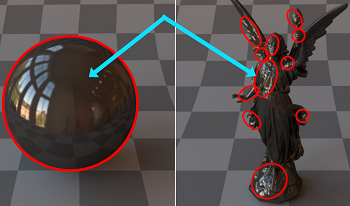
Gloss is an important appearance attribute, and its exact perceptual mechanisms are yet to be fully understood. Previous works attempted to model the relationship between optical and perceptual gloss. The state-of-the-art studies demonstrate that the human visual system has a poor ability to recover surface reflectance and perceived gloss rather depends on image cues that are generated by a complex interaction among optical material properties, illumination, object shape, and its surface geometry. Therefore, perceptual models defined on a particular shape, such as a sphere, may not generalize to other objects. To investigate shape-specific differences, we conducted a psychophysical experiment with a simple sphere and complex Lucy shapes. We scaled the magnitude of apparent gloss to study how the shape affects perceived gloss, and how the role of optical material properties varies between the shapes. We observed significant cross-shape differences, which we argue can be explained by the analysis of the image cues.
Davit Gigilashvili, Akib Jayed Islam, "The Role of Shape in Modeling Gloss" in Color and Imaging Conference, 2022, pp 271 - 276, https://doi.org/10.2352/CIC.2022.30.1.47
 Find this author on Google Scholar
Find this author on Google Scholar Find this author on PubMed
Find this author on PubMed